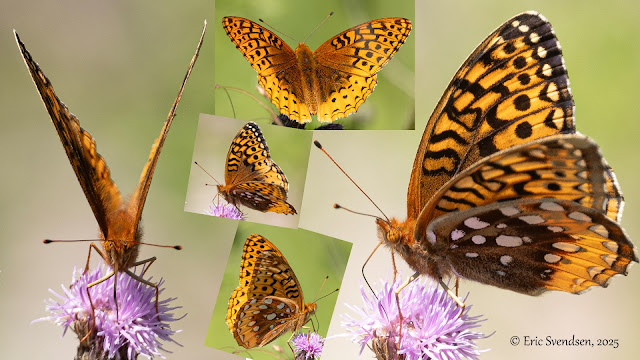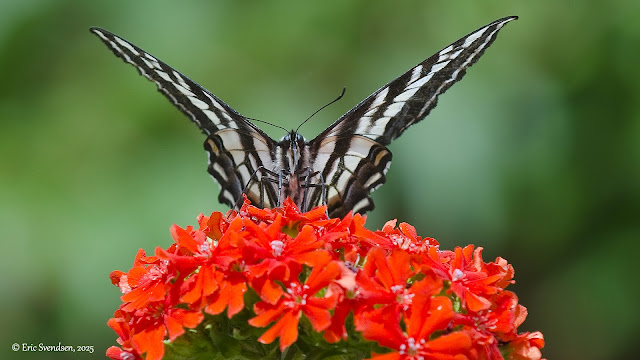How to photograph butterflies. Part 2: Orientation of your subject.
 |
| Several photos of two fritillary butterfly species I recently photographed. |
Who doesn't love butterflies? I have hundreds of butterfly photos. I have them enlarged in my home, I have sold them, and I love taking them. Over the years I have developed a bit of a knack for getting good photos - none perfect, but enough to satisfy me. I also enjoy figuring out the species and reading up on their life habits. I hope to be able to convey some of what I have learned to you.
Butterflies tend to stand with their wings closed, unlike moths that, when grounded, keep their wings pressed flat against their bodies. This can make it difficult to get a good shot of the upper wing surface. However, butterflies also use their wings to both gain heat through solar radiation and to lose heat if their body temperatures get too high. They do this by spreading their wings to let the sun warm them up (basking) or by gently fanning them to allow air currents to cool them down. In both cases, the wings will open to various degrees and that is the moment to capture the upper surface on media.
One of the great features of digital media is that you can take many hundreds or thousands of photos on a single memory card. This allows you to shoot multiple images of your subject. For every single shot that I like of my subject there are ten to twenty that I reject. Don't be stingy with your shots - you can always delete those you don't use.
Butterflies move quickly when probing a flower for nectar. The insect soon knows if a flower is worth exploring. Their feet dance along its surface, the proboscis probes the depths, and the body is constantly changing position. It is important to repeatedly acquire focus, change position, and follow your subject as it explores the flower. It will leave after a short visit and attend another, hopefully nearby. Be ready to move.
I have a saying, "Point your shadow." It means shoot with the sun behind your back so your shadow is in line with your subject. This allows you to have the best lighting. You can also use flash, either a hot shoe mounted one with a long lens or a macro ring flash on a macro lens. Keep in mind that most butterflies will not stand a close approach; greater distance usually means greater success.
I like to photograph the butterfly with as much of the flower as I can get. Flowers are strongly associated with butterflies and showing both typically is a better choice. Your purpose may be to help obtain an ID, to get a great shot, or maybe both - which is usually my goal. Lots of photos from different angles increases the likelihood of both. Butterfly identification can be simple or tricky and having as much visual information as possible will help with that.
Some of my favourite butterfly shots are made with the camera and butterfly facing each other. It happened one summer, the first few weeks of July, where we visited a plant nursery which boasted numerous potted, flowering plants. On one was a pale swallowtail butterfly, and it was positioned in such a way that I could shoot it head on from a depressed angle of view. You can see the image below.
Depth of field, shutter speed, and other such parameters are important too when trying to get photos. We will leave that for another blog.
Thanks for reading.
Eric Svendsen www.ericspix.com




Comments
Post a Comment